We stumbled across the fascinating town, Orvieto, on a trip to Italy a few years ago and it remains one of my favourite finds; not only because it is a gorgeous example of a medieval Italian town, but because of the many unexpected things we found there – from quirky wooden puppets, to a real-life miracle, and a network of 2000 year old caves hidden beneath.
Perched 325m above sea level on a mountain of volcanic tufa rock, at first glance Orvieto almost appears to be floating on a cloud. Sometimes called ‘between heaven and Earth’, it sits high up, looking almost menacingly over the picturesque surrounding Umbrian countryside. It’s no wonder it took the Romans two years seize it and conquer the Etruscans in 283BC; there is practically no way to get to the top unannounced.
These days you can drive up, or take a bus. We took the scenic route; an electric funicular ( kind of like a tram) that climbs the 157m to the top. It’s an attraction in itself, and the views as you take the steep ride are spectacular.
I’m going to provide some pictures here – but please note; these were taken a few years ago before I bought a good camera and learned a bit about photography. These are ‘point and shoot’ dodgy family snaps (plenty of grain and absolutely no concept of composition)- but still worth sharing.
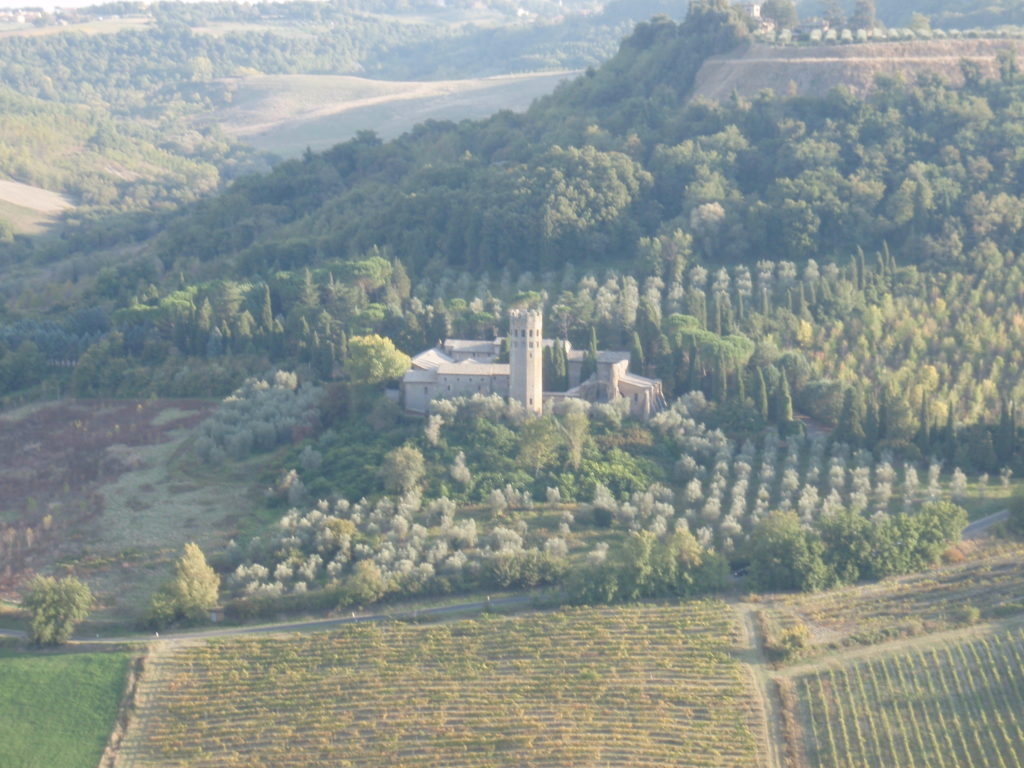
The view riding up the funicular.
The centre of Orvieto is the Piazza del Duomo (public square of the Duomo). The Duomo (the church) is so huge it almost looks out of place. Seriously, it’s like the square is the size of a postage stamp and the church is a cup of coffee sitting on top. It’s monstrous. But beautiful. It’s very gothic; the sides are dark blue-grey and white stone stripes, but it’s the front that is truly impressive. Incredible sculptures and bas reliefs, brightly coloured almost jewel-like mosaics, intricate filigree decorations of pure gold and huge bronze doors that look like they are built for giants. It took 300 years to build and absolutely no expense was spared!
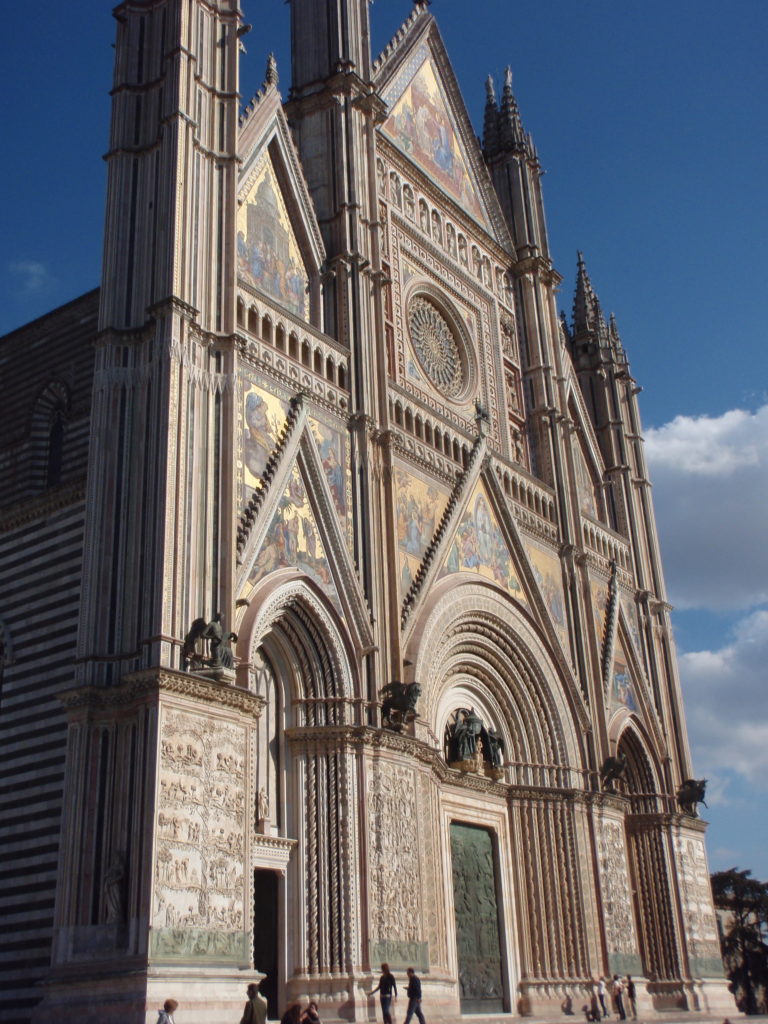
The incredible front of the Duomo decorated in pure gold.
It dominates the piazza, and there isn’t even enough room to get back far enough to get the whole thing in a photo. I was in awe. How did they get all those materials up the mountain? The mind boggles.

I just couldn’t fit the entire church in one shot, it’s huge!
As with all churches in Italy, this one has a story. Apparently a priest in neighbouring Bolsena witnessed blood coming from the sacramental bread. It apparently spilled onto the linen alter cloth and was hailed a miracle. The Duomo was commissioned in 1290 to be built as a shrine to the miracle of Bolsena. You can see the miraculous blood stained cloth on display in the church tabernacle.
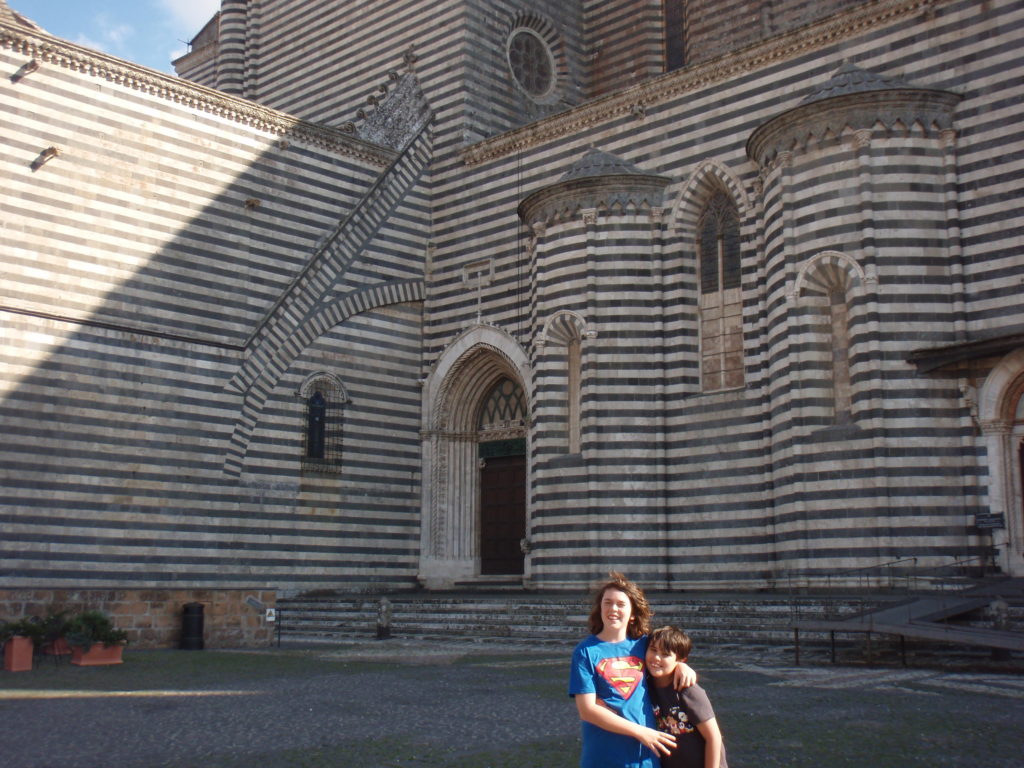
Inside the Duomo is just as impressive. The artwork rivals anything you see at the Vatican. The famous Italian renaissance artist Luca Signorelli’s Giudizio Universale (Judgment Day) is a massive display that covers the entire walls of the chapel. It is said his depictions of The Damned Cast into Hell influenced Michelangelo’s frescoes in the Sistine Chapel. There is a theory that a prostitute painted on the wings of a demon was actually Luca Signorelli’s unfaithful lover. If you look closely all the prostitutes in the scenes have been painted with the same face (what a way to shame your ex forever!)
I find history fascinating but my kids were thankful for the games centre across the road (which seemed ridiculously out of place in this historic town).
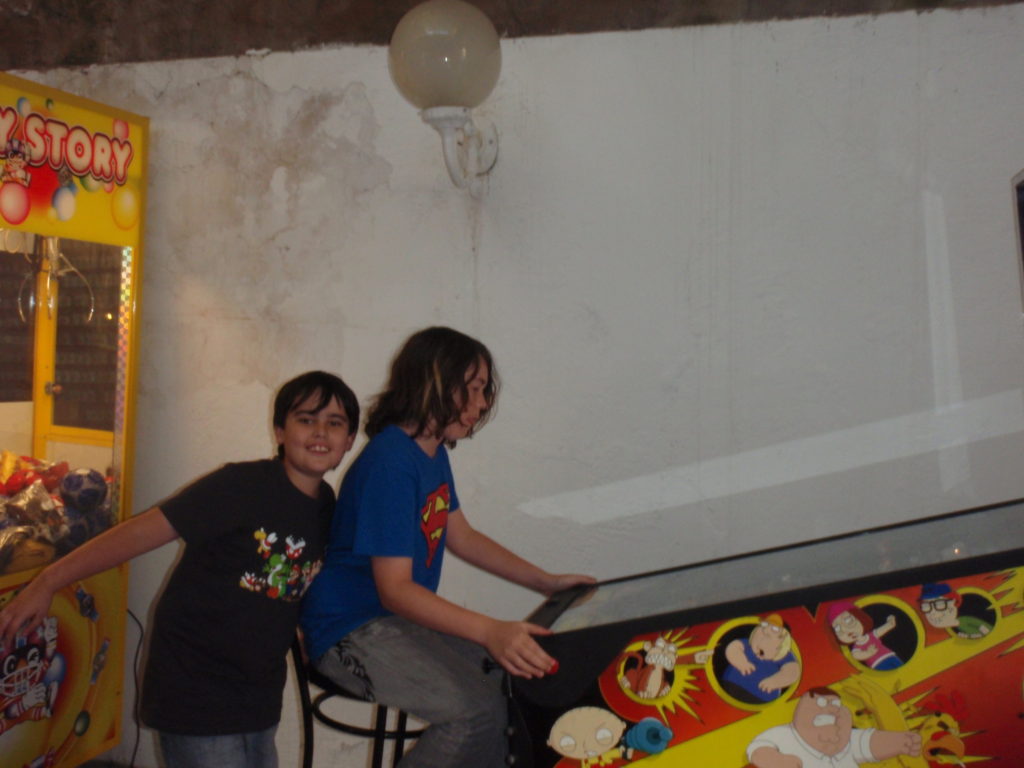
Seriously?
The Duomo is definitely the most visual attraction in town, but it’s what you can’t see that is even more interesting. Right out the front of the Duomo lies a stone entrance and stairs leading underground to a labyrinth of tunnels, archways and niches carved out of volcanic rock that looks like an ants nest; veering off into seemingly endless different directions. In the subterranean light it felt like we were in another world. We were told that for every three steps that are taken above ground, there is a cave lying beneath. Looking up at the stony ceiling I couldn’t help but wonder how the town has not yet caved in.
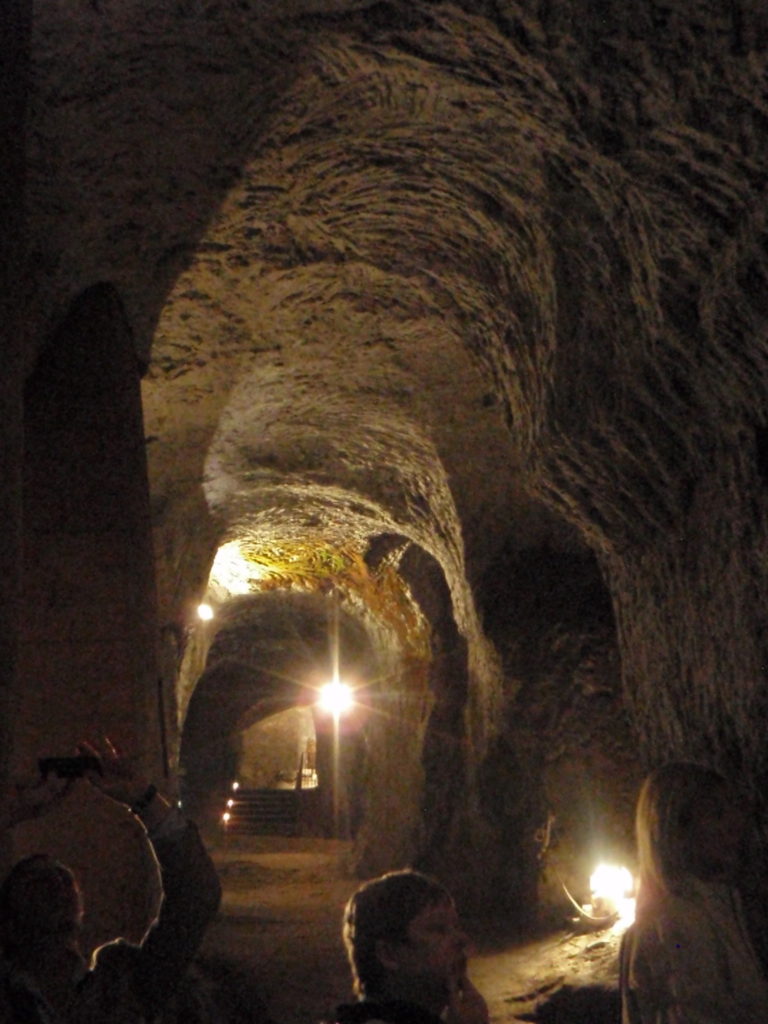
In the underground world.
Built by the Etruscans some 2000 years ago, the caves were initially built as wells to reach water. They were then used as mills, stables, storage and even safe-houses during war. Small windows and niches were carved where pigeons would roost, supplying the residents with eggs and food. Incidentally, pigeon is one of the gastronomic specialties of the town.
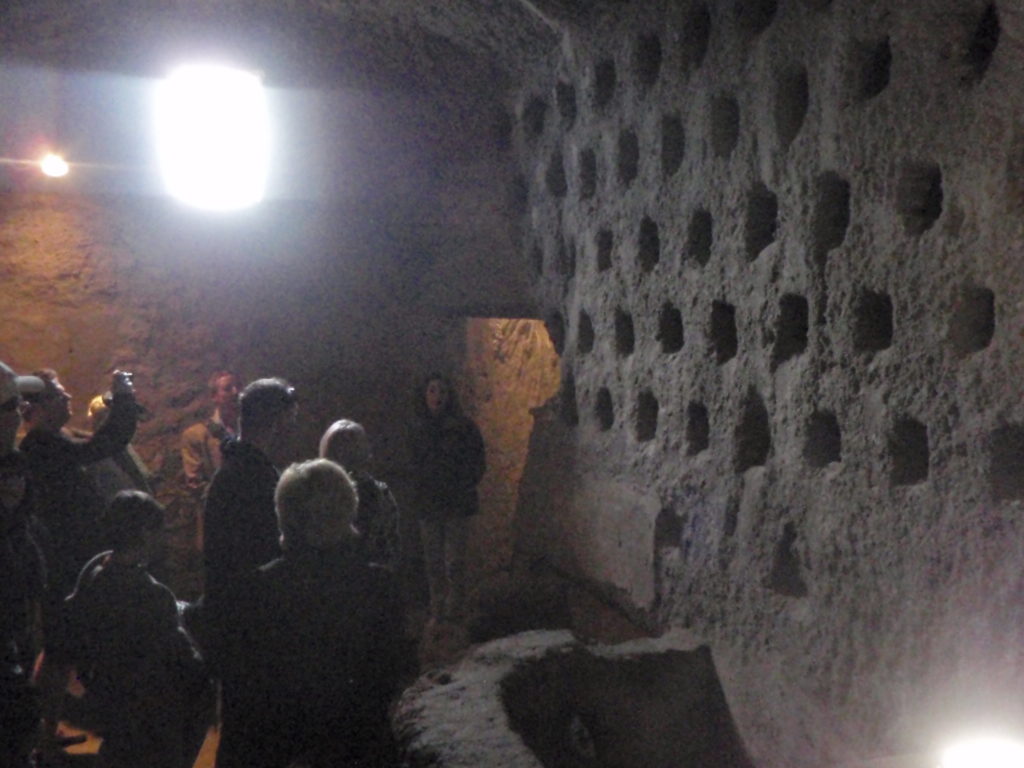
Where they kept the pigeons.
To access the caves, you need to take a guided tour ( 6 euro) which gives great insight of what life was like in ancient times. Considering the tour visits only two caves out of the 1200, it is mind boggling to imagine the full complexity of the underground maze lurking beneath the town, a whole other ancient city. Today, residents and shop-owners acquire their very own cave with the purchase of the building above (an added bonus!). I imagined children who live there playing hide and seek in the caves in their backyards, oblivious to the thousands of years of history they contain.
Back above ground, Orvieto is renown for its artisan crafts. A stroll from the main piazza down Via del Duomo (everything seems to centre around the Duomo) takes you past a plethora of ceramic shops that beckon you in with beautiful hand painted plates hanging on the walls. After going into at least 20 different shops I bought one solitary bowl (and have ever since regretted not buying more).
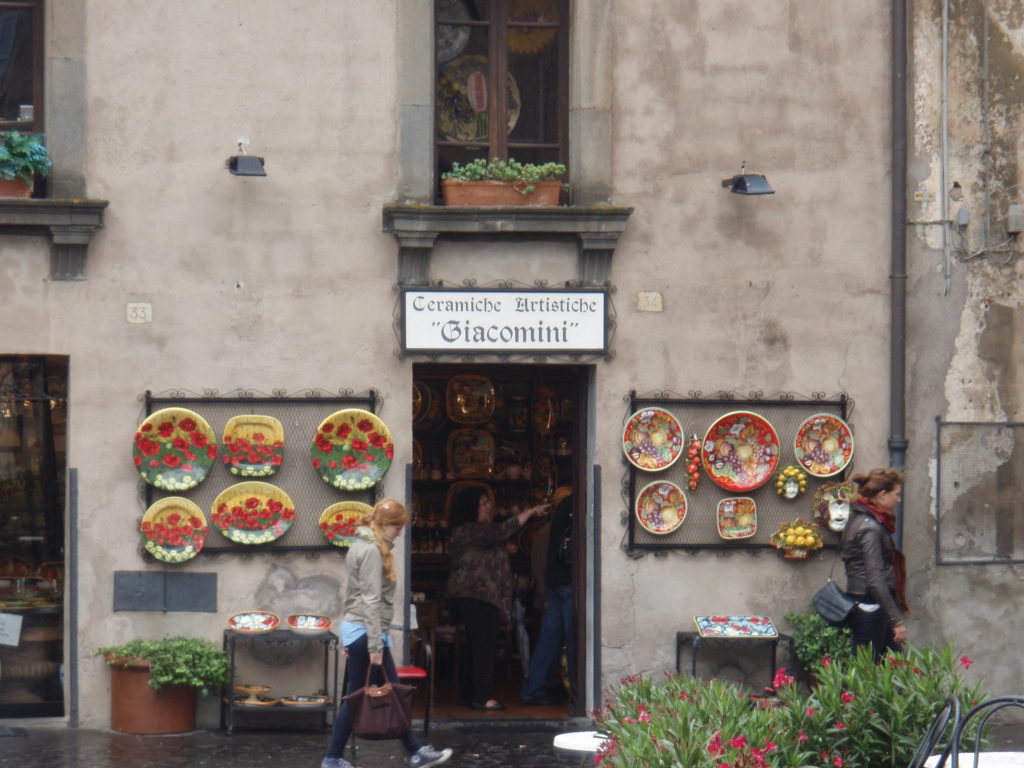
One of the many artisan ceramic shops.
The streets are very pretty, just like you’re on a movie set. In particular Via del Magori, also known as the street of artisans, is like stepping into a fairytale. Folk-style wooden characters from children’s stories made by the late famous woodworker Gualverio Michelangeli seem to be everywhere you look. The puppet-like characters are actually dotted all over town, creating a treasure hunt for the quirky pieces as we explored streets. Michelangeli’s workshop is now run by his family and well worth a visit to pick up some interesting pieces to take home. Cafe Montanucci, on Corso Cavour, is also worth visiting, showcasing an amazing display of his work (and the house-made chocolates are to die for).
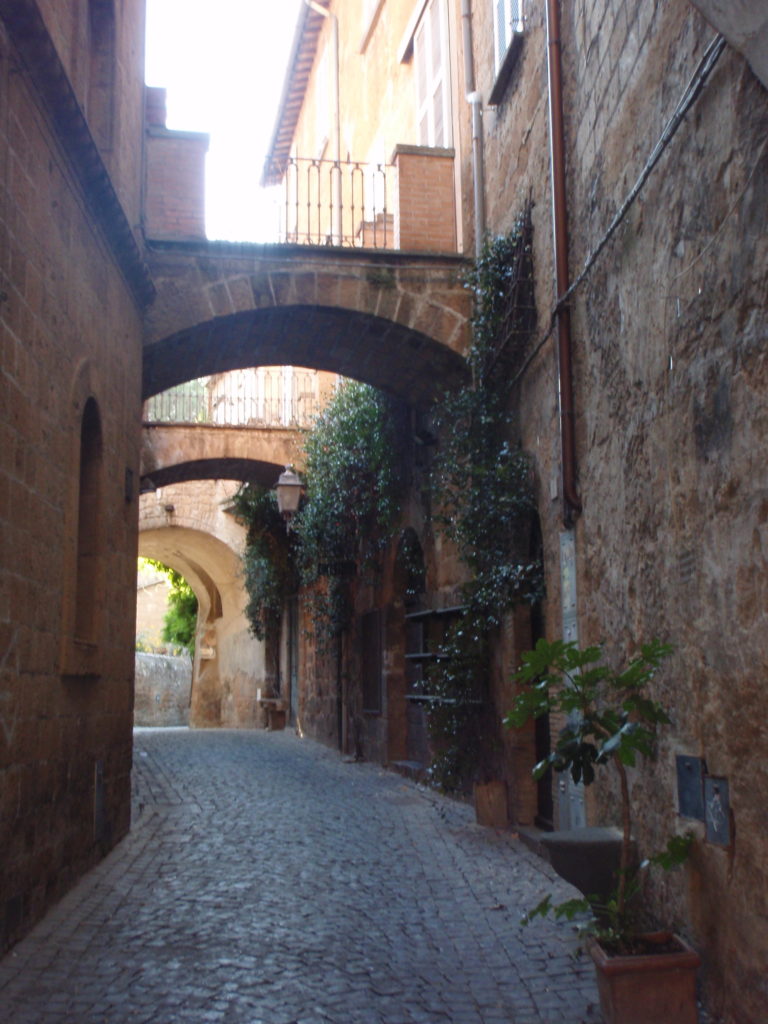
Those impossibly pretty cobblestone streets.
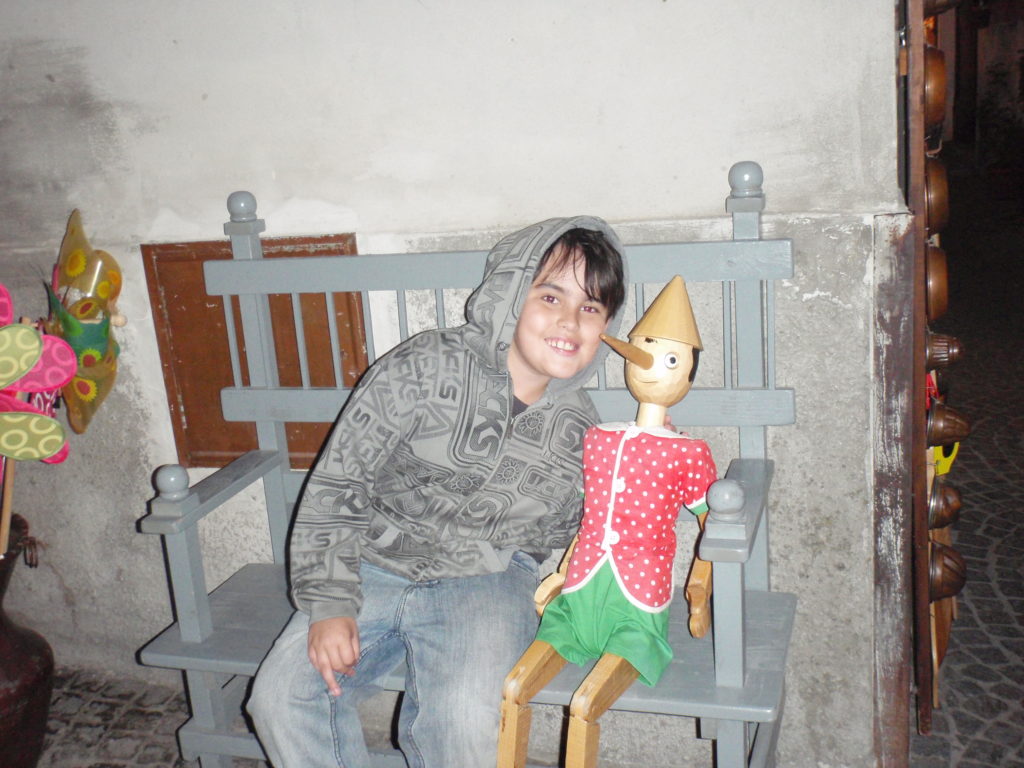
One of Michelangeli’s creations (the puppet – not the boy!)
Also on Via de Magori is Il Mago di Oz (the Magic of Oz). Such a strange sight to come across, the entrance to the quirky store is flanked by a knight in armour and a human size Betty Boop. Inside is a spectacle of one-of-a-kind treasures and pieces that magically come to life. The slightly eccentric owner, Giuseppe Rosella, is apparently a well-known character – and is only too pleased to show is prized photo-board of many celebrities, including George Clooney and Sarah-Jessica Parker, who have visited his store.
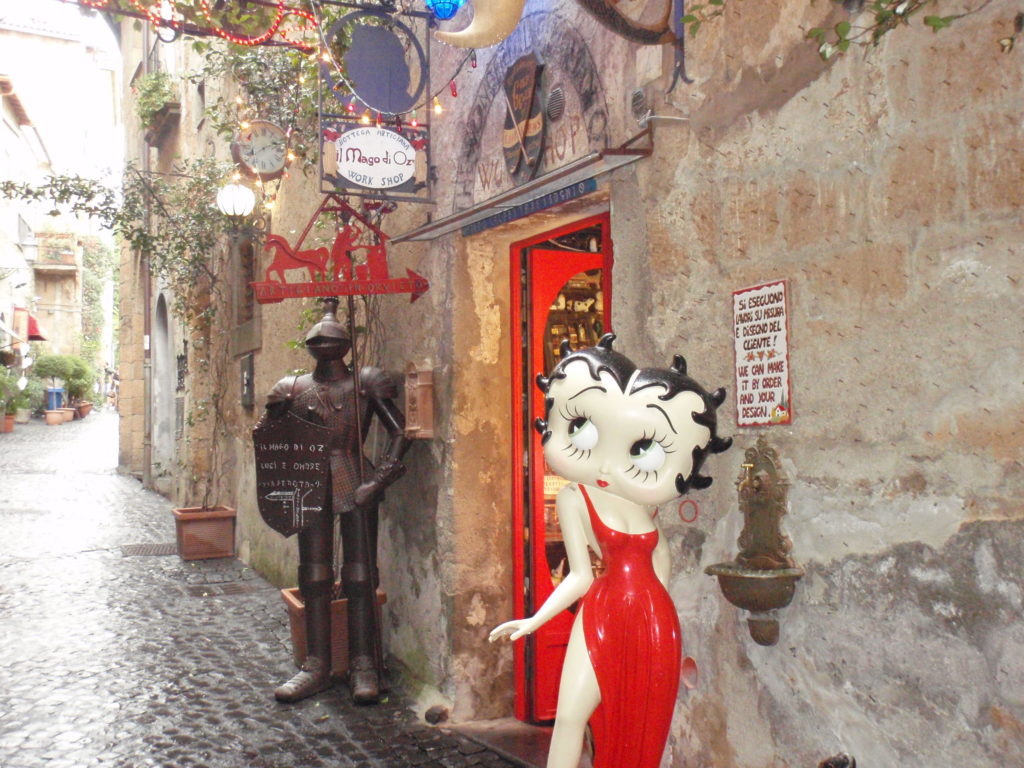
The most quirky store – Il Mago di Oz
All that exploring makes for hungry tummies, and Orvieto is full of incredible eateries. We particularly loved Cantina Foresi, right in front of the Duomo and next to our hotel (Hotel Duomo). Like many of the restaurants in town, it is underground in one of the caves. You walk through an ivy framed archway down into a dim-lit rustic room that even in the daytime looks like a secret den. The food is rustic and local – artisan cold meats, local cheese, hearty soups, antipasti and plenty of local wine. My favourite was thinly sliced rosemary and garlic infused porchetta (pork), stuffed in a panini (bread roll). Simple – but amazing.
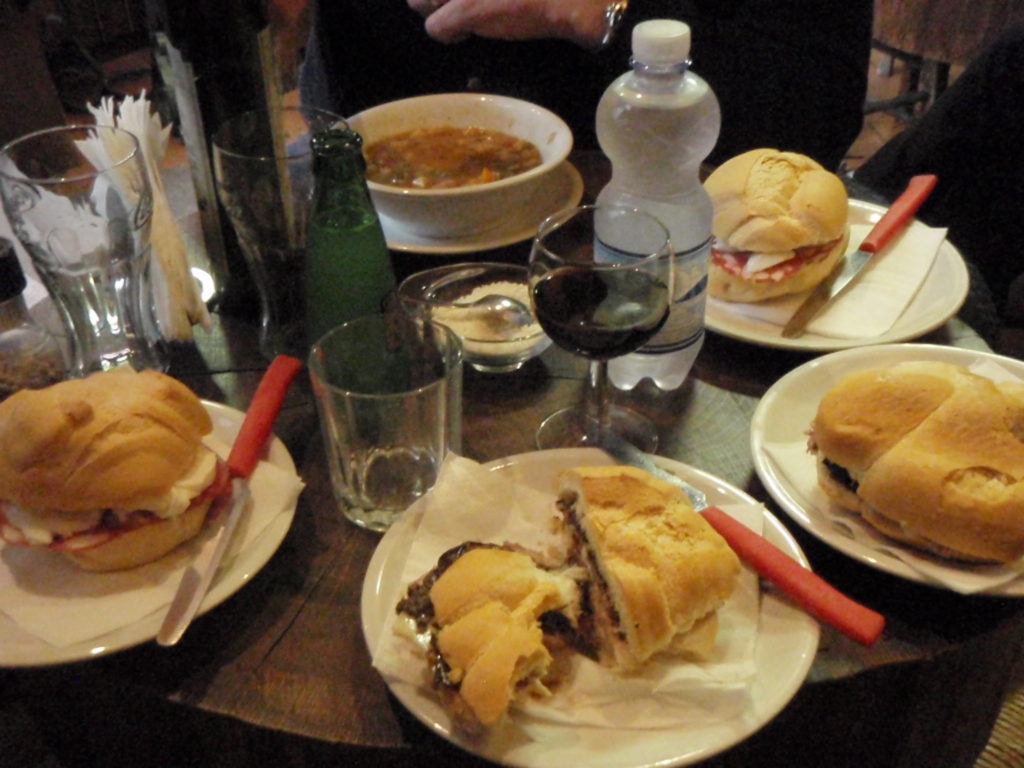
And then we ate copious amounts of gelato. Because when you’re Italy, that’s just what you do.
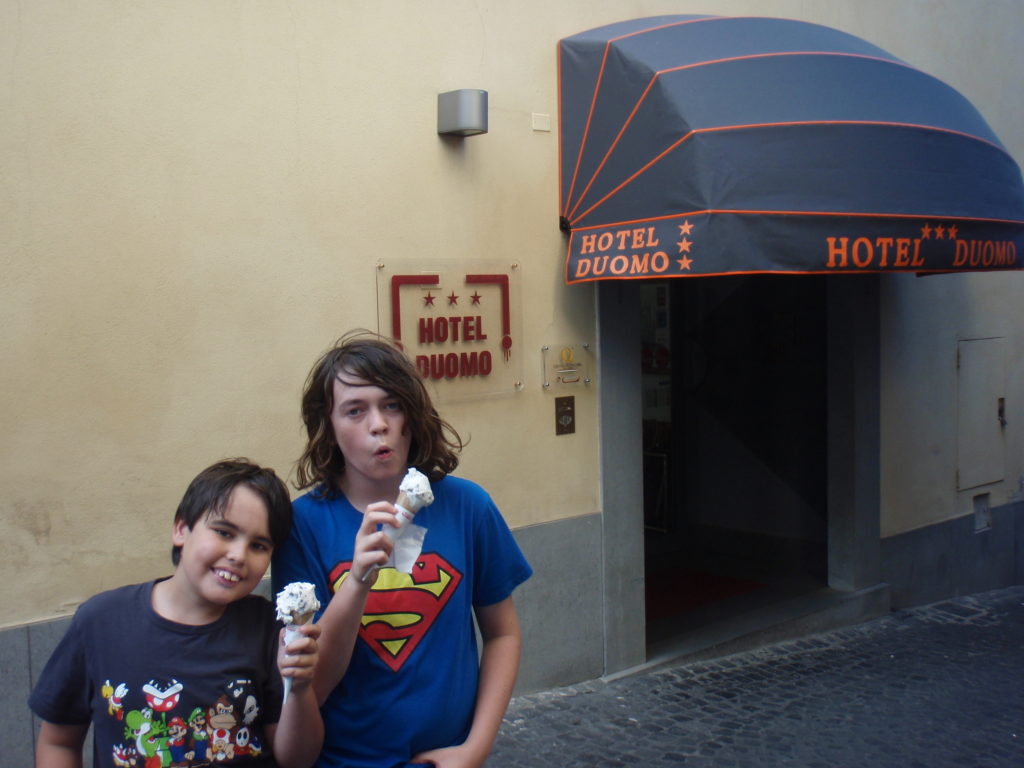
A gelato out the front of our hotel: Hotel Duomo
Orvieto is only one hour from Rome, so it’s a great day trip (which is how most people see it). But it was worth staying just to see the town come alive at night. I say ‘come alive’ but in actual fact the opposite is true. Once all the day time tourists were gone, the streets were quiet, and we joined the locals in the bars and restaurants.
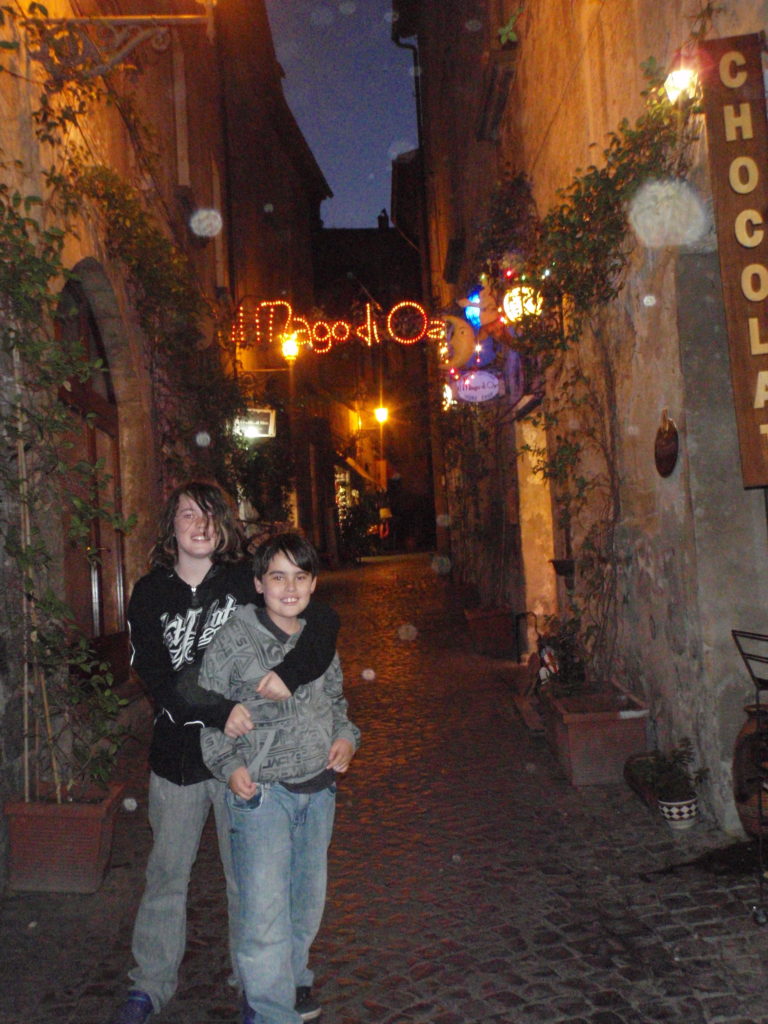
Not a tourist in sight!
We loved Orvieto. A town full of surprises.



Leave a Reply